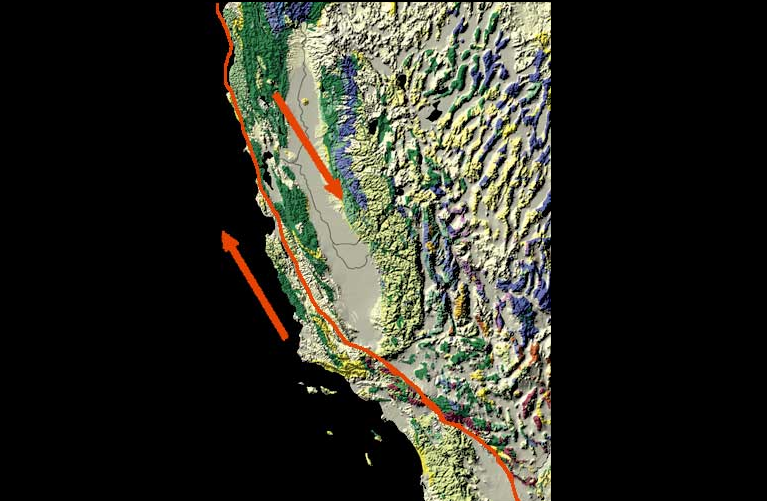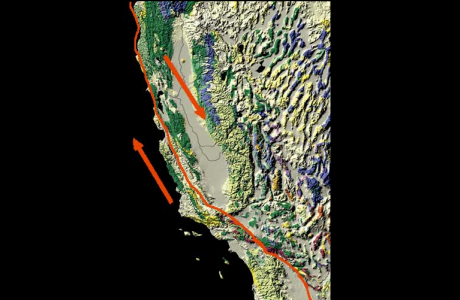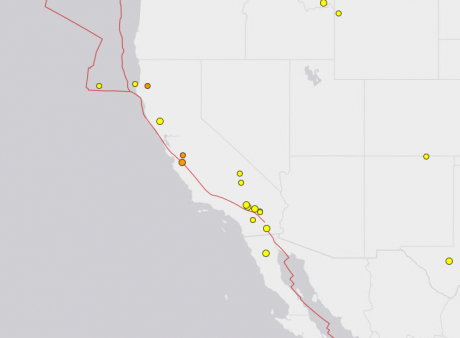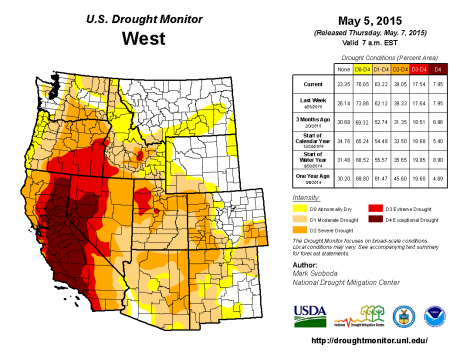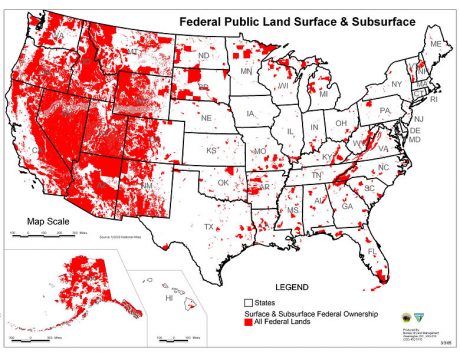 Did you know that the federal government owns 28 percent of all land in the United States? Today, the feds control approximately 640 million acres of land, and after decades of very poor management, many are calling on the states to take a larger role. This is particularly true in the 11 western states where the federal government collectively owns 47 percent of all land. East of the Mississippi River, the feds only own 4 percent of all land, and there is no reason for such a disparity to exist. In Connecticut and Iowa, the federal government only owns 0.3 percent of all land. Such an arrangement seems to work very well for those states, and so why can’t we dramatically reduce federal land ownership in the western states as well?
Did you know that the federal government owns 28 percent of all land in the United States? Today, the feds control approximately 640 million acres of land, and after decades of very poor management, many are calling on the states to take a larger role. This is particularly true in the 11 western states where the federal government collectively owns 47 percent of all land. East of the Mississippi River, the feds only own 4 percent of all land, and there is no reason for such a disparity to exist. In Connecticut and Iowa, the federal government only owns 0.3 percent of all land. Such an arrangement seems to work very well for those states, and so why can’t we dramatically reduce federal land ownership in the western states as well?
Of course the federal government will always need a very small amount of land for certain national purposes, and nobody is disputing that. According to the Heritage Foundation, the following are the primary purposes that federal land is being used for…
These holdings include national parks, national forests, recreation areas, wildlife refuges, vast tracts of range and wasteland managed by the Bureau of Land Management, reservations held in trust for Native American tribes, military bases, and ordinary federal buildings and installations.
We will always need to have some land set aside for those purposes.
But does the Bureau Of Land Management really need more than 247 million acres?
Does the Forest Service really need more than 192 million acres?
Does the Fish and Wildlife Service really need more than 89 million acres?
If the feds were doing a good job, that would be one thing, but in so many instances federal land managers have gotten an extremely bad reputation. The following comes from an article by Sue Lani Madsen…
For example, federal land is exempt from state noxious weed control laws, and lack of weed control has earned federal land a reputation as a bad neighbor. Frustrated local federal land managers are hindered by layers of internal regulations and restricted funding that make timely response to weed outbreaks difficult.
And thanks to mismanagement by the feds, wildfires tend to spread very rapidly in many areas owned and controlled by the federal government. At this point more than 2.6 million acres of land have already burned in 2017, and that is close to 30 percent ahead of last year’s pace.
If you have never lived in a western state, it may be difficult for you to imagine just how frustrating it is to have the federal government in control of vast stretches of your state. In so many cases the feds simply do not care about local issues or concerns, and when they drop the ball there is often very little that can be done about it.
According to Ballotpedia, the federal government owns more than 28 percent of the land in 12 different western states…
Washington: 28.5 percent
Montana: 29.0 percent
New Mexico: 34.7 percent
Colorado: 35.9 percent
Arizona: 38.6 percent
California: 45.8 percent
Wyoming: 48.1 percent
Oregon: 52.9 percent
Alaska: 61.2 percent
Idaho: 61.6 percent
Utah: 64.9 percent
Nevada: 84.9 percent
Here in Idaho, we are glad to have so much public land because it is a wonderful thing for hunters, fishers, hikers and those that enjoy other outdoor activities.
So we want to continue our tradition of having wide open spaces that are owned by the public – we just want the federal government to hand over the keys and leave.
We believe that Idaho land should be owned by the people of Idaho, and we believe that Idaho’s natural resources should be managed by the people of Idaho.
Those that are against transferring ownership of federal land to the states often argue that it would be too expensive for the states to handle…
Paying for wildfire protection alone—it accounts for about half of the U.S. Forest Service’s annual budget of $6.5 billion—would burden Western taxpayers, says the Center for Western Priorities, a conservation group.
States would be forced to raise taxes or sell off iconic national properties to developers or other private investors in order to pay for everything the federal government does now—from complicated tasks like enforcing environmental regulations and maintaining cultural and historic resources to simple ones like putting up road and trail signs.
But one study found that it is actually profitable for states to manage their own public lands. Here is more from Sue Lani Madsen…
A 2015 study by the Property and Environment Research Center, a free-market environmental think tank, consistently found state-managed land provided a return on every dollar spent while federal lands managed by the U.S. Forest Service and Bureau of Land Management cost more to operate than they return in revenue.
At the end of the day, this is just another area where we need to readjust the balance of power between the states and the federal government. Our founders intended to create a system where the states had much more power than the central government, but instead that has become totally flipped around.
Today, it is almost as if the 10th Amendment does not even exist. Most of the time the federal government treats state governments as little more than puppets, and very few state governments have the backbone to stand up for themselves.
As conservatives, we need to start standing up against the costly federal mandates that are imposing such a financial burden on our state governments. We want control of our own laws and our own budgets.
It is also time for the feds to get off the backs of our farmers, our miners, our loggers and our ranchers. Some of the most abusive federal agencies, such as the EPA, need to be shut down entirely.
And if our local communities do not want to take Islamic refugees from the Middle East, they should not be forced to do so by the federal government. Here in Idaho, three young Islamic refugees raped a 5-year-old girl, and yet the federal government does not seem to care about our outrage.
Recently, I have been talking to so many people that just want the federal government to leave us alone. Instead of solving our problems, most of the time the federal government is the problem, and things would be so much better if the feds would just stay out of our business.
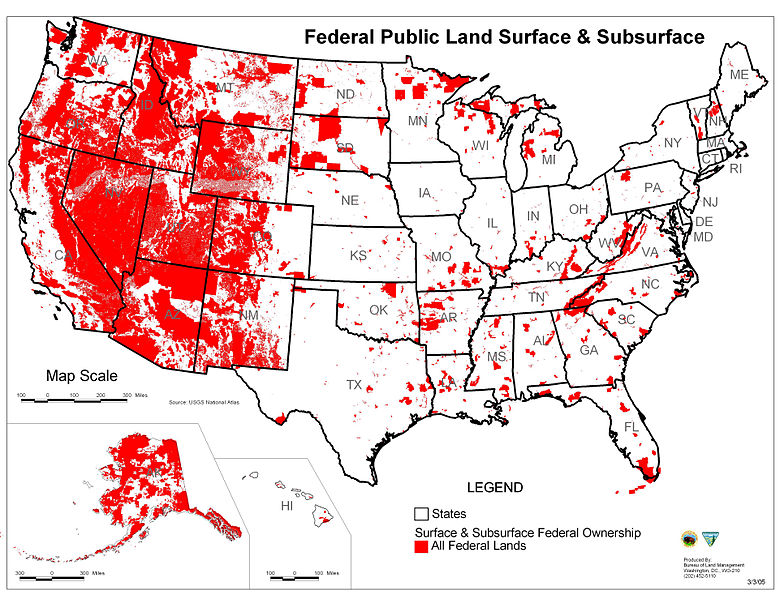

 It has been said that “as California goes, so goes the nation”. That is why it is such a shame what is happening to that once great state. At one time, California seemed to be the epicenter of the American Dream. Featuring some of the most beautiful natural landscapes in the entire world, the gorgeous weather and booming economy of the state inspired people from all over the world to move to the state. But now people are moving out of the state
It has been said that “as California goes, so goes the nation”. That is why it is such a shame what is happening to that once great state. At one time, California seemed to be the epicenter of the American Dream. Featuring some of the most beautiful natural landscapes in the entire world, the gorgeous weather and booming economy of the state inspired people from all over the world to move to the state. But now people are moving out of the state 
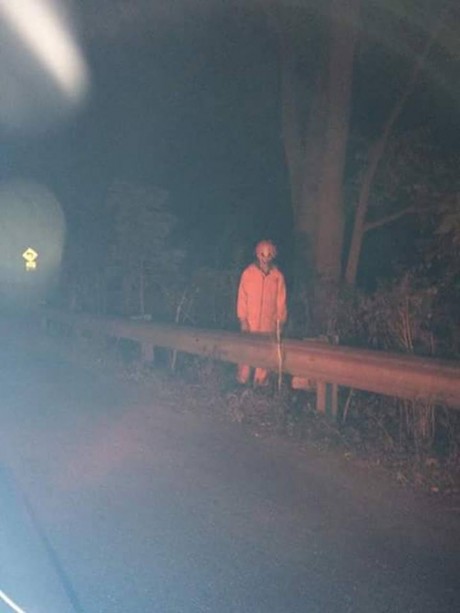
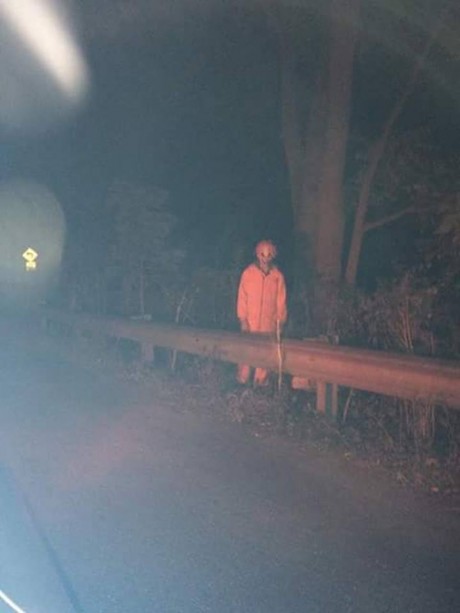

 Just like during the last economic crisis, homeless encampments are popping up all over the nation as poverty grows at a very alarming rate. According to the Department of Housing and Urban Development, more than half a million people are homeless in America right now, but that figure is increasing by the day. And it isn’t just adults that we are talking about. It has been reported that that the number of homeless children in this country has risen
Just like during the last economic crisis, homeless encampments are popping up all over the nation as poverty grows at a very alarming rate. According to the Department of Housing and Urban Development, more than half a million people are homeless in America right now, but that figure is increasing by the day. And it isn’t just adults that we are talking about. It has been reported that that the number of homeless children in this country has risen 